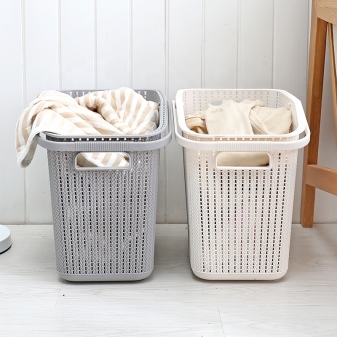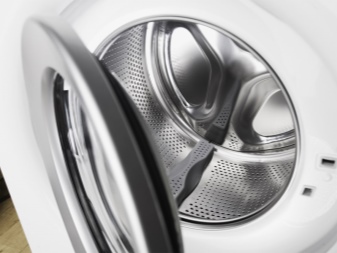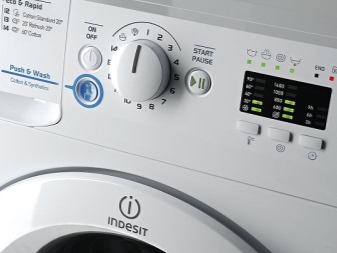How to calculate the weight of laundry for a washing machine and why is it needed?

Drum volume and maximum load are considered one of the key criteria when choosing a washing machine. At the beginning of using household appliances, rarely does anyone think about how much clothes actually weigh and how much they should be washed. Before each process, it is rather inconvenient to weigh the laundry on the scales, but constant overloading will lead to an early breakdown of the washing unit. The maximum possible load is always indicated by the manufacturer, but not all clothes can be washed in this amount.


Why do you need to know a lot of laundry?
As mentioned earlier, the manufacturer determines the maximum allowable weight of the loaded laundry. On the front panel it can be written that the equipment is designed for 3 kg, 6 kg or even 8 kg. However, this does not mean that all clothes can be loaded in that amount. It should be noted that the manufacturer indicates the maximum weight of dry laundry. If you do not know at least the approximate weight of the clothes, it will be quite difficult to effectively use the washing machine. So, the desire to conserve water and wash everything in one go can lead to overloading.
There are times when, on the contrary, too few things fit into a typewriter - this will also lead to an error and poor-quality program execution.

Minimum and maximum rates
The amount of clothes to be washed should vary within the limits specified by the manufacturer. So, the maximum permissible weight is always written on the body of the washing machine and additionally in the instructions for it. It should be noted that the minimum load is rarely indicated. Usually we are talking about 1-1.5 kg of clothing. Correct operation of the washing machine is possible only if there is no underload or overload.
The manufacturer's maximum weight is not suitable for all programs. Usually the manufacturer gives recommendations for cotton items. Thus, mixed and synthetic materials can be loaded at about 50% of the maximum weight. Delicate fabrics and wool are completely washed at the rate of 30% of the specified load. Additionally, consider the volume of the drum. 1 kg of dirty clothes requires about 10 liters of water.


Maximum permissible load depending on the washing machine and the type of fabric:
Vehicle model | Cotton, kg | Synthetics, kg | Wool / silk, kg | Delicate wash, kg | Quick wash, kg |
Indesit 5 kg | 5 | 2,5 | 1 | 2,5 | 1,5 |
Samsung 4.5 kg | 4,5 | 3 | 1,5 | 2 | 2 |
Samsung 5.5 kg | 5,5 | 2,5 | 1,5 | 2 | 2 |
BOSCH 5 kg | 5 | 2,5 | 2 | 2 | 2,5 |
LG 7 kg | 7 | 3 | 2 | 2 | 2 |
Candy 6 kg | 6 | 3 | 1 | 1,5 | 2 |
If you put less than 1 kg of clothes in the washing machine, then a failure will occur during spinning. Low weight leads to incorrect load distribution on the drum. Clothes will remain wet after washing.
In some washing machines, the imbalance appears earlier in the cycle. Then things can be poorly washed or rinsed out.


How to determine and calculate the weight of things?
When loading the washing machine, it is important to consider the type of fabric. It depends on this how much the clothes will weigh after getting wet. Moreover, different materials take up the volume in different ways. Loading dry woolen items will visually take more weight in the drum than the same amount of cotton items. The first option will weigh much more when wet.
The exact weight of the garment will vary by size and material. The table will help you determine an approximate figure to make it easier to navigate.
Name | Female (g) | Male (g) | Children's (g) |
Underpants | 60 | 80 | 40 |
Bra | 75 | ||
T-shirt | 160 | 220 | 140 |
Shirt | 180 | 230 | 130 |
Jeans | 350 | 650 | 250 |
Shorts | 250 | 300 | 100 |
The dress | 300–400 | 160–260 | |
Business suit | 800–950 | 1200–1800 | |
Sport suit | 650–750 | 1000–1300 | 400–600 |
Pants | 400 | 700 | 200 |
Light jacket, windbreaker | 400–600 | 800–1200 | 300–500 |
Down jacket, winter jacket | 800–1000 | 1400–1800 | 500–900 |
Pajamas | 400 | 500 | 150 |
Robe | 400–600 | 500–700 | 150–300 |


Washing the bed linen usually does not raise questions about weight, because the sets are loaded separately from the rest of the clothes. However, it should be noted that the pillowcase weighs about 180-220 g, the sheet - 360-700 g, the duvet cover - 500-900 g.
In the considered household device, you can wash shoes. Approximate weight:
- mens slippers weigh about 400 g, sneakers and sneakers, depending on the seasonality, - 700-1000 g;
- women's shoes much lighter, for example, sneakers usually weigh about 700 g, ballet flats - 350 g, and shoes - 750 g;
- Children's slippers rarely exceed 250 g, sneakers and sneakers weigh about 450-500 g - the total weight strongly depends on the child's age and foot size.
The exact weight of a garment can only be found with a scale. It is convenient to create your own table with accurate data on the clothes that are in the house. You can wash things in certain batches. So, it is enough to measure the number of kilograms once.


Auto weighing function
During loading of the washing machine, the weight of the dry laundry is calculated. This is very good, because it would be too difficult to calculate the weight of wet things. Modern models of washing machines have an auto-weighing function. The main advantages of the option:
- don't have to weigh yourself or just guessing the weight of the clothes that need to be washed;
- as a result of the operation of the option you can save water and electricity;
- washing machine does not suffer from overload - the system simply will not start the process if there is too much laundry in the tub.


In this case, the motor acts as a scale. It is located on the axis of the drum. This allows you to keep track of the motor stress and force required to rotate. The system records this data, calculates the weight and displays it on the screen.
Do not exceed the maximum load of the washing machine. The automatic weighing system will simply block the ability to start a program if there are too many clothes in the drum. Household appliances with this option first weigh, and then offer to choose the optimal program. The user can save resources, because the system calculates the required amount of water and the intensity of spin by weight.


Consequences of congestion
Each washing device can withstand a certain load, load the laundry based on the capacity of the drum. If you overload it once, then there will be no particularly serious consequences. It is possible that the clothes will simply not rinse well or will not wring out. Consequences of regular overload:
- bearings may break, and changing them in a washing machine is extremely difficult;
- the sealing gum on the hatch door will deform and leak, the reason is the increased load on the hatch door;
- much the risk of breaking the drive belt increases.
Drum overload can be accompanied by the wrong choice of items. So, if you fill the washing machine with several large towels, then it will not be able to spin properly. Things will gather in one place on the drum, and the technique will start to make more noise.


If the model is equipped with a balance control sensor, the washing will stop. Avoiding this is easy - you need to combine big things with small ones.
For how to load your washing machine for best results, see the next video.













The comment was sent successfully.